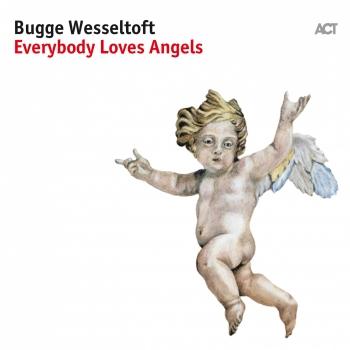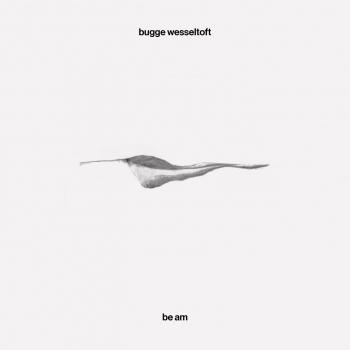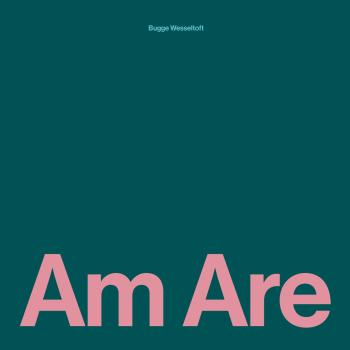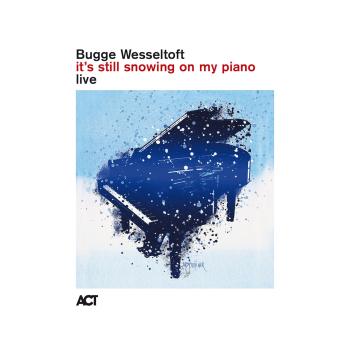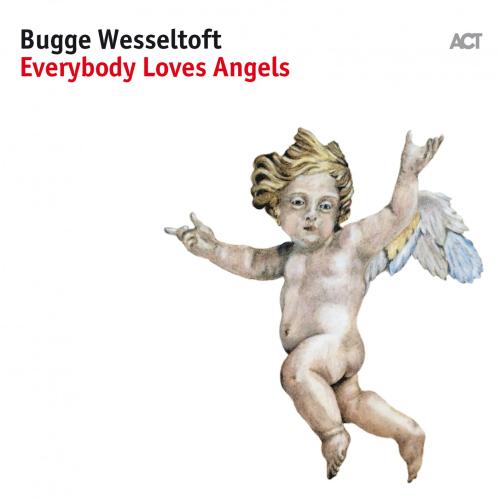
Everybody Loves Angels Bugge Wesseltoft
Album info
Album-Release:
2017
HRA-Release:
29.09.2017
Album including Album cover Booklet (PDF)
- 1 Es Sungen Drei Engel 05:07
- 2 Bridge over Trouble Water 08:27
- 3 Koral 06:22
- 4 Angel 05:24
- 5 Reflecting 01:53
- 6 Morning Has Broken 05:20
- 7 Salme 04:48
- 8 Blowing in the Wind 05:56
- 9 Angie 03:33
- 10 Locked out of Heaven 04:10
- 11 Let It Be 04:42
Info for Everybody Loves Angels
There can be very few musicians who are capable of making silence as audibly vivid as the Norwegian Bugge Wesseltoft, in particular in his solo piano recordings.For twenty years, the most successful of these,“It’s Snowing On My Piano”, has been treasured as ahaven of wintry stillness and contemplation. It is a classic album. Listeners all over Europe have responded to it by giving it a permanent place in their lives. So nowBugge Wesseltoft and producer Siggi Loch have returnedto the original concept of “Snowing” in “EverybodyLoves Angels”. The title is a metaphor for the kind ofweightless ease which the music conveys; and this timeit's not just for winter...
The success story started in 1997. Bugge Wesseltoft had just released the album “New Conception Of Jazz” on his own newly-founded label Jazzland. That album broke new ground, combining electronic sounds and grooves with his unmistakeably limpid, transparent piano playing, and the result was a timeless work of art. It left an indelible mark on subsequent generations of pianists, and established him as one of the most important innovators in jazz. ACT label boss Siggi Loch had been following Wesseltoft with interest for quite some time, and made him an offer: to bring a very different side of his musicianship to the fore, and to record a completely acoustic solo piano set “with Christmas in mind” for the fledgling ACT label.
Wesseltoft is vehemently opposed the over-commercilisation of Christmas, and yet he did find himself attracted to the idea of recording music which would restore quietness to times in which everything is getting inexorably louder. So Bugge Wesseltoft and Siggi Loch met up at Oslo's Rainbow studio. With the pianist’s little daughter Maren perched on his lap, Wesseltoft started to improvise on Christmas songs and folk melodies. That first solo piano recording was to be the most successful – it achieved the highest sales in the history of ACT. As the popular German newspaper WAZ wrote at the time: “In ist almost unworldly beauty, It's Snowing On My Piano is the greatest Christmas CD that jazz has ever produced.”
Now, twenty years later, the world is a very different place. A non-stop flow of virtual data, and ever more complex and opaque structures and contexts govern people's everyday lives. It is a world in which the loudest often comes out on top. So, more than ever, people long for a place of sanctuary where they can just have the chance to slow down. Bugge Wesseltoft, who worked for a time in a clinic looking after traumatised patients, has a special insight into the power of music to bring solace to disturbed minds. That is why he was so enthusiastic about the idea of finding another quiet place to record “Everybody Loves Angels”. This time they went to the rugged beauty of the Lofoten region, and to the largest wooden church in Norway. “LofotKatedralen” is also a concert venue and has a superb Steinway piano.
The location for the recording has a particular significance for Wesseltoft: “Over the years”, he says, “nature has become an increasingly important source of inspiration for me. In this place there are moments when I experience the feeling of being part of something much bigger. There was no place which could have felt more natural for this recording than Lofoten. The area is beautiful but also harsh, as is life here, just as it was for my great-grandfather, who was born here. To make a recording in the unbelievable LofotKatedralen brought all these things together for me.”
In his interpretations of songs by Lennon/McCartney, Paul Simon, Johann Sebastian Bach, Bruno Mars and several others, Wesseltoft has a way of shaping the sound of notes and chords, and of opening up spaces between notes that is uniquely his. As he plays, he does not follow any fixed plan, metre or arrangement; what happens is completely subservient to intuition in the moment. Every sound stands on its own merits. It is as if Wesseltoft is listening his way through into new spaces that open up for him, which then lead on to other doors through which he and the listener can step together. This world of contemplation is a musical counterweight to the zapping mentality of our time. The slowness and the pared-down state of the music permit listeners to find their own stories, colours and shades, to enter into spaces which they will want to visit again and again – and in any season.
Bugge Wesseltoft, piano
Recorded February 24 – 26, 2017 at LofotKatedralen, Lofoten, Norway
Engineered by Asle Karstad
Mixed and mastered by Ulf Holand at Holand Sound
Produced by Siggi Loch, Bugge Wesseltoft
Bugge Wesseltoft
Seit der norwegische Keyboarder 1990 als Mitglied der Band von Bassist Arild Andersen die internationale Jazzszene betrat, hat er eine wirklich beeindruckende Wandlung durchgemacht: Weg von den nordischen Jazztraditionen, die er u.a. mit Landsleuten wie Jan Garbarek und Andersen auf Alben für ECM hegte und pflegte, hin zu seiner eigenen neuen Konzeption des Jazz, die sich nicht scheut, Elemente von Deep House, Ambient Music, Drum’n’Bass, Big Beat und Funk gleichberechtigt zu integrieren.
Jazz aus Norwegen ist jahrzehntelang weltweit - außer natürlich in Norwegen selbst - vor allem mit dem in München beheimateten ECM-Label des deutschen Produzenten Manfred Eicher assoziiert worden. Seit Eicher ab 1970 (meist im Team mit dem exzellenten Osloer Toningenieur Jan Erik Kongshaug) Aufnahmen von Jan Garbarek, Terje Rypdal, Arild Andersen, Sidsel Endresen, Jon Balke und zuletzt Ketil Bjørnstad produzierte und auch international erfolgreich lancierte, gilt das ECM-Label unter anderem als Brutstelle dieser speziellen Variante des Jazz.
Ungeachtet der eigentlich kaum zu überhörenden Tatsache, daß Garbarek, Rypdal, Andersen und Co. trotz mancher Gemeinsamkeiten doch über sehr unterschiedliche musikalische Eigenheiten verfügen, zimmerten europäische und amerikanische Kritiker - in meist gar nicht mal böser Absicht - mit professioneller Hingabe aus mehr oder minder netten folkloristischen Clichés eine Schublade, in die fortan alle norwegischen Jazzkünstler ebenso ungefragt wie unreflektiert hineingesteckt wurden.
Aus genau dieser Cliché-Schublade hüpfte 1996 wie ein Springteufel der damals 32jährige Keyboarder und Sound-Tüftler Jens Bugge Wesseltoft mit seinem Album ”New Conception Of Jazz”. Wesseltofts musikalische Biographie weist zwar eine ganze Reihe von Verknüpfungspunkten zu den meisten der vorgenannten norwegischen Künstler auf. Darüberhinaus arbeitete er aber auch mit stilistisch ganz anders orientierten Künstlern wie dem Schlagzeuger Billy Cobham oder dem brasilianischen Popstar Gilberto Gil zusammen.
”Ich wollte etwas machen, das meine ganze musikalische Persönlichkeit widerspiegelt”, erläuterte der Keyboarder 1996 das Konzept seiner Einspielung. Dabei ist der Jazz definitiv Wesseltofts Ausgangspunkt. Sein Vater ist ein in Norwegen etablierter Jazzgitarrist und so wuchs Bugge daheim mit Platten wie Miles Davis’ ”Kind Of Blue” auf. Wie viele aufstrebende Jazzmusiker seiner Generation bezog er seine Inspiration primär von amerikanischen Größen wie Miles Davis, John Coltrane, Herbie Hancock und Chick Corea. Dazu gesellten sich dank der norwegischen Herkunft aber bald auch Leitbilder vom Schlage Jan Garbareks, Terje Rypdals, Arild Andersens und Jon Christensens.
Später, nachdem er selbst eine musikalische Laufbahn eingeschlagen hatte, konnte Bugge Wesseltoft mit diesen vier norwegischen ”Jazz-Gurus” zusammenarbeiten und eine Menge von ihnen lernen. Ebenso sehr hat sich Wesseltoft aber auch im Bereich der zeitgenössischen norwegischen Rockmusik umgetan, sowohl als Instrumentalist als auch als Produzent. All dies führte ihn musikalisch schließlich dorthin, wo man ihn heute findet: auf und zugleich zwischen allen stilistischen Stühlen. Und das breitgefächerte Spektrum seiner diversen Erfahrungen floß auf ausgesprochen natürliche Weise auch in sein ”neues Jazzkonzept” ein.
”Ich mag es, über eine bestimmte Form oder Soundscapes zu improvisieren”, gesteht Wesseltoft. ”Es fasziniert mich, rhythmische Elemente zu schaffen und eine Klanglandschaft metrisch zu manipulieren. Das ist für mich allemal interessanter und kreativer als das traditionelle Thema-Solo-Thema-Ding herunterzuspulen.”
Booklet for Everybody Loves Angels









